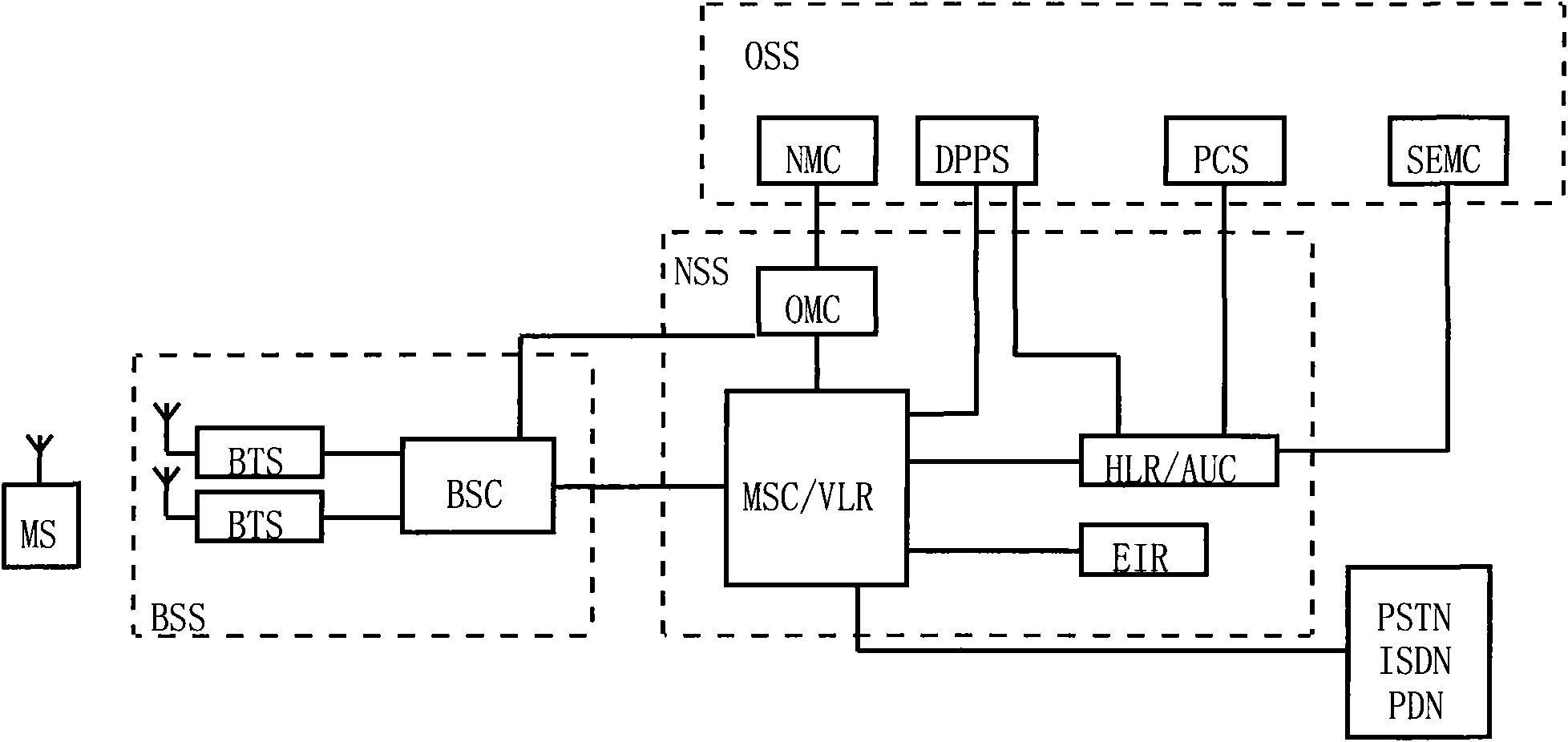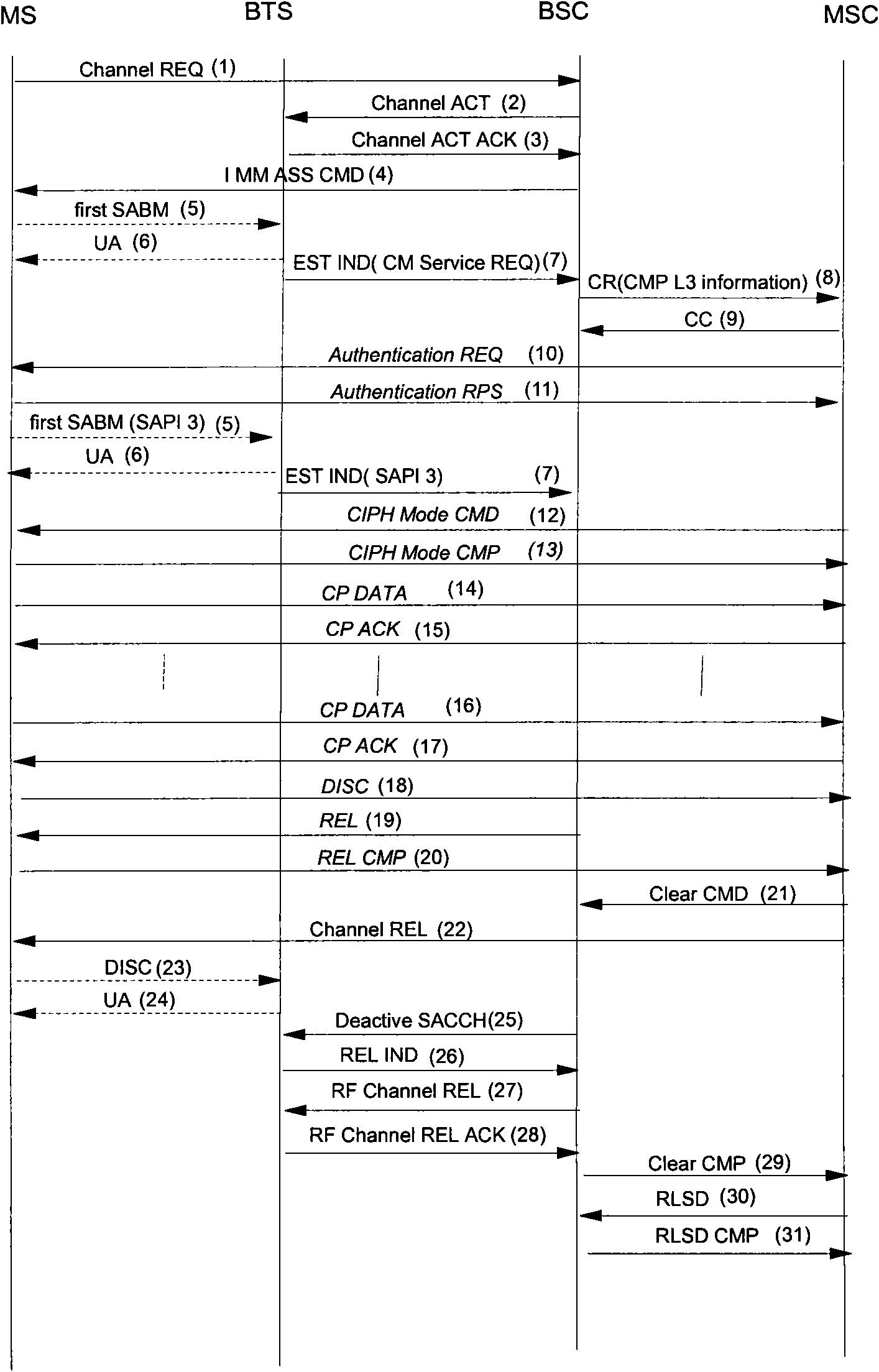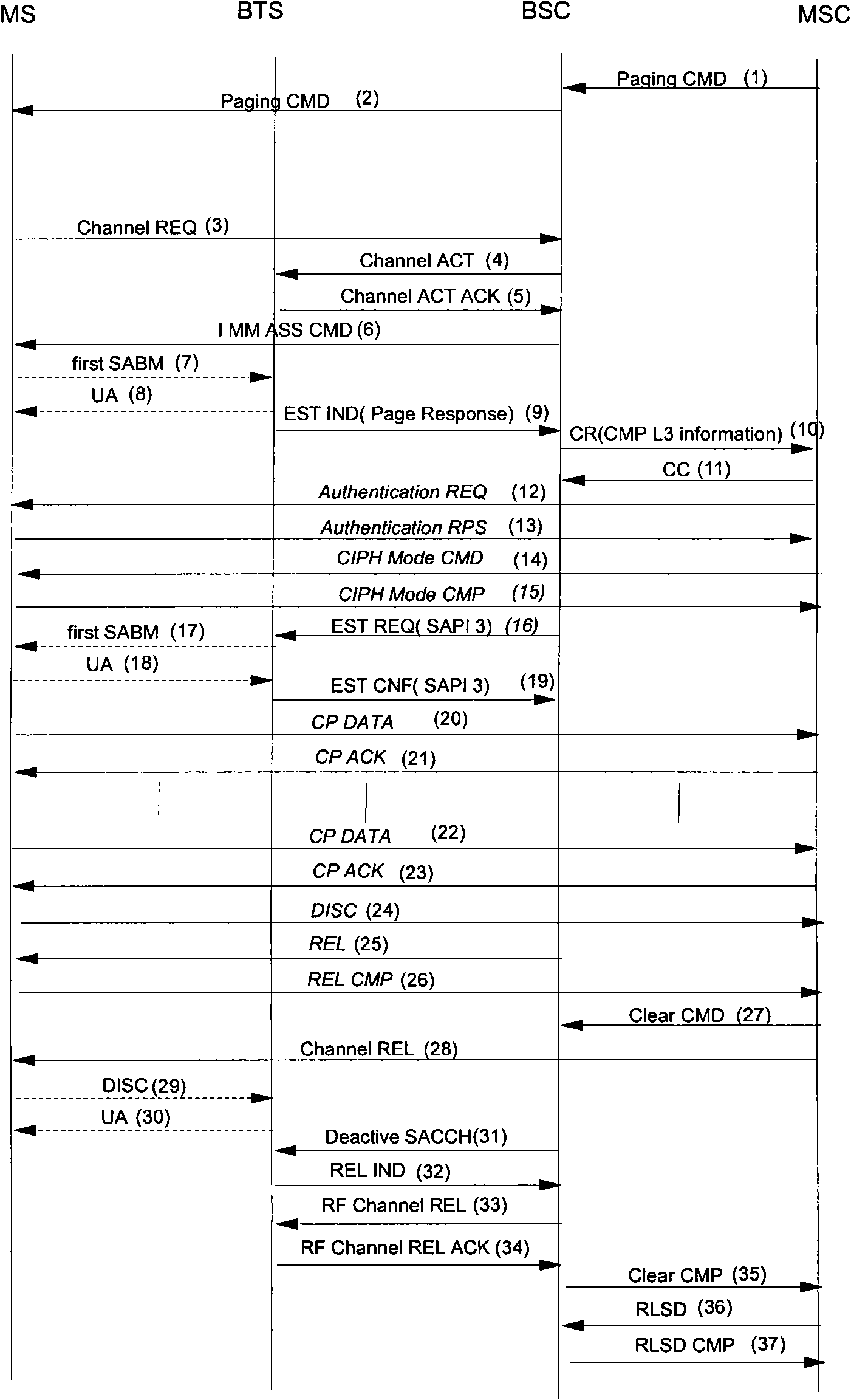Short message sending method, short message service device and substation subsystem
A technology of base station subsystem and short message service, applied in the field of short message sending, short message service device and base station subsystem, can solve the problems of increasing the burden of the core network, and achieve the effect of reducing the burden and lightening the burden
- Summary
- Abstract
- Description
- Claims
- Application Information
AI Technical Summary
Problems solved by technology
Method used
Image
Examples
Embodiment 1
[0036] Such as Figure 4 As shown, the method provided for an embodiment of the present invention includes the following steps:
[0037] S411. The BSS receives the short message sent by the first MS.
[0038] The first MS may use the existing technology to send the short message, for example, use the CP-DATA message to send the short message, and the CP-DATA includes the identifier of the receiver. For the convenience of expression, it is called the second MS here.
[0039] S415, if the first MS and the second MS are local users of the BSS, the BSS locally forwards the short message to the second MS.
[0040] In this step, if both the first MS and the second MS are local users in the BSS, the BSS may directly forward the short message to the second MS via the BSS without going through the core network.
[0041] The BSS local forwarding here refers to direct forwarding within the BSS without going through the core network. Three examples are given here, and these three examp...
Embodiment 2
[0087] See Figure 6 , Figure 6 Combined with the GSM system, a flow diagram of the method for sending and receiving short messages between two MSs under the same BTS is given.
[0088] In this embodiment, both MS A and MS B reside on the same BTS, and both are local users. Figure 6 The flow chart shown is a flow chart of MS A sending a short message to MS B.
[0089] Wherein steps S701-S705 are the phases in which MS A accesses the BTS. At this stage, MS A can access the BTS in an existing way.
[0090] S701, MS A sends a channel request message Channel Request to the BTS on a random access channel (RACH, Random Access CHannel);
[0091] S702-S705, for channel activation and channel activation response, after the BSC allocates the corresponding channel for MS A successfully, it notifies MS A of the dedicated channel (SDCCH, SDCCH, Stand-Alone Dedicated Control Channel).
[0092]S706 Subsequently, MS A will send a layer 3 message—CM Service Request on the SDCCH allocat...
Embodiment 3
[0140] See Figure 7 , Figure 7 A flow diagram of a method for sending and receiving short messages between MSs belonging to different BTSs is given.
[0141] Among them, MS A resides in BTS 1, and MS B resides in BTS 2. Both MS A and MS B are local users. If MS A needs to send short messages to MS B, MS A needs to access BTS 1 first to obtain the dedicated channel assigned by BTS 1. For the process of MS A accessing BTS 1, refer to Figure 6 The implementation of S701-S705 shown will not be repeated here.
[0142] Steps S806-S812, the process of requesting SMS service for MS, can refer to Figure 6 The implementation of S706-S713 shown will not be repeated here.
[0143] S813 MS A sends a CP-DATA message to BTS 1, and the message contains the content of the short message. After receiving the message, BTS1 can analyze the identity of the receiver MS B.
[0144] According to the analyzed identification of MS B, it is judged whether MS B is a local user, if so, proceed to ...
PUM
 Login to View More
Login to View More Abstract
Description
Claims
Application Information
 Login to View More
Login to View More - Generate Ideas
- Intellectual Property
- Life Sciences
- Materials
- Tech Scout
- Unparalleled Data Quality
- Higher Quality Content
- 60% Fewer Hallucinations
Browse by: Latest US Patents, China's latest patents, Technical Efficacy Thesaurus, Application Domain, Technology Topic, Popular Technical Reports.
© 2025 PatSnap. All rights reserved.Legal|Privacy policy|Modern Slavery Act Transparency Statement|Sitemap|About US| Contact US: help@patsnap.com



